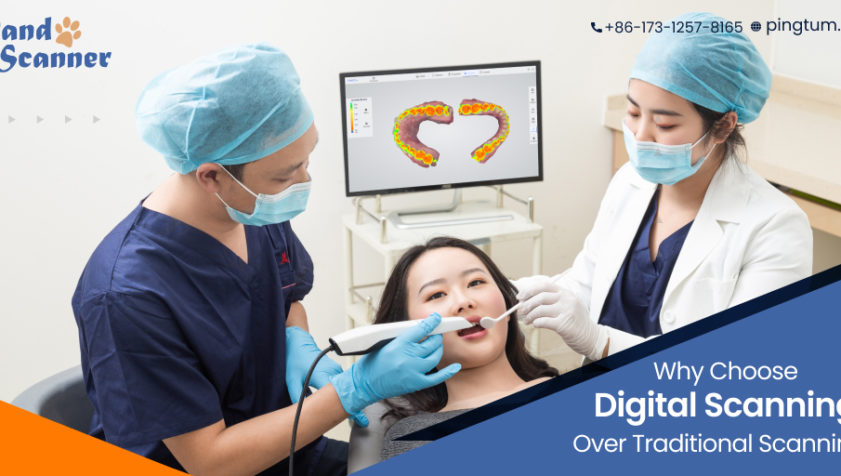As the world of dentistry evolves many new technologies and techniques are emerging as well. Digital scanning is one such technology that is gaining a lot of attention worldwide. While one cannot deny that digital scanning using tools like digital dental scanners offers many benefits, it is important to know whether the digital scanning method is truly worthwhile and can be more effective than a conventional scanning method. Learning the key differences between the two can help you understand why digital scanning can be a better alternative for traditional scanning in more than one way.

Traditional scanning
The traditional scanning method for obtaining dental impressions involves a tedious and complicated process. This is because the patients are required to wait for several hours holding alginate materials in their mouth to give their dental impression. Although there are no needles involved in the process, the unpleasant taste of the material and the risk of choking can make the process less friendly for the patients. Also, patients with strong gag reflexes and Temporomandibular joint or TMJ issues can struggle a lot with the process and find it extremely painful. Such problems not only affect the patients but also the dentists, for to obtain accurate measurements, the dentists may have to repeat the entire process.
Digital scanning
Unlike the traditional scanning procedure, digital scanning eliminates the use of alginates and wax-up models to obtain dental impressions. By using an oral scanner in dentistry, dentists can capture the images of a patient’s oral cavity and thereafter fabricate a 3D digital model of the same. The digital dental scanners allow patients to visualize the entire scanning process on the side monitor and let them undergo the non-invasive scanning process smoothly without any pain and discomfort. Moreover, the digital scanning system allows virtual transmission of the digitally generated 3-dimensional intraoral impressions to the lab. This helps dentists to achieve a custom fit for the patients’ crowns and enables patients to get the best service in a short amount of time.
Some more reasons to consider digital scanning over traditional scanning:
- Helps to craft impressions perfectly as it can access every nook and corner of a patient’s buccal cavity that is not possible with traditional scanning
- Reduces the scanning time considerably and helps both patients and dentists
- Helps to get rid of the wax-up model that can trigger gagging
- Enhances patient’s experience with a fast and comfortable procedure
- Allows patients to view the entire scanning process from the side monitor, which a traditional scanning system does not offer.
- Minimizes diagnostic errors
- Allows storage of dental impression virtually, saves space, and reduces costs
- Eliminates the need for disposable trays, impression materials that can cause pollution when deposited in landfills
Conclusion
Given that digital scanning offers more benefits compared to the traditional scanning method, dentists and patients are fast embracing the former. As a result, the clinics that are switching to digital oral scanner dentistry are receiving more footfalls than the clinics that are sticking to the traditional scanning method.






